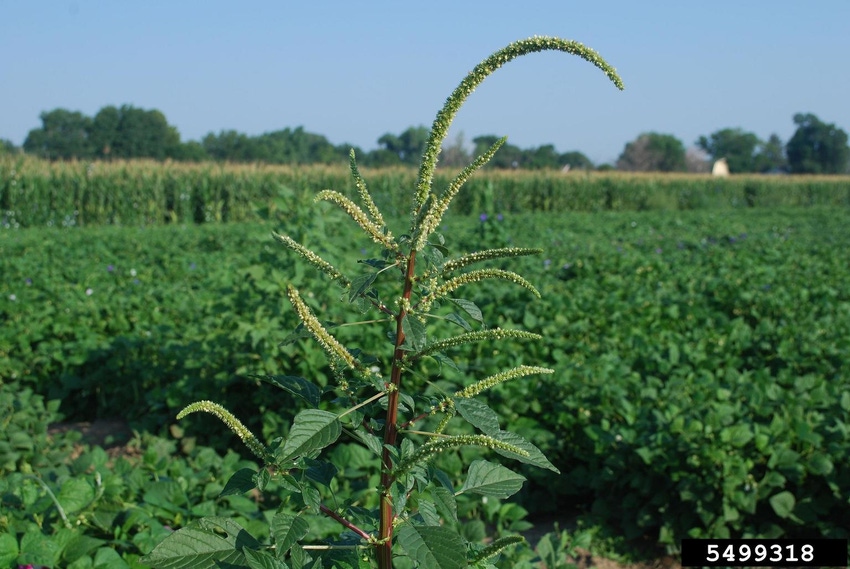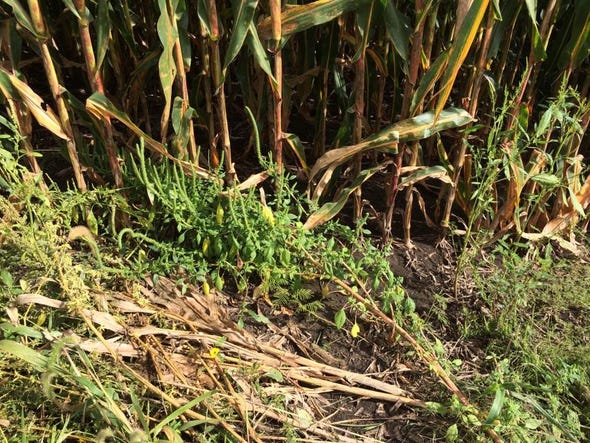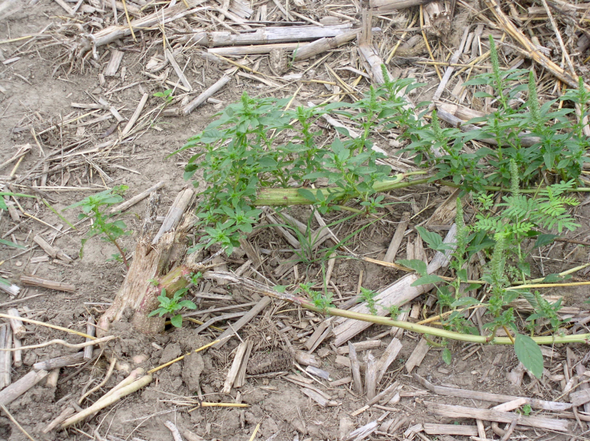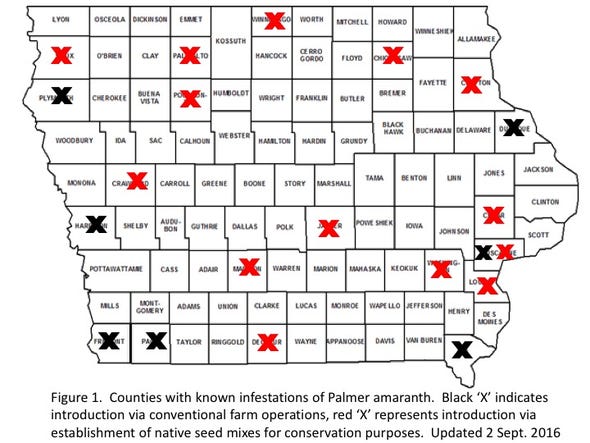September 13, 2016

Discoveries of Palmer amaranth in conservation plantings have created the need to develop management plans to reduce the likelihood of movement of the weed into crop fields (Figure 1).
Reducing or preventing Palmer amaranth seed production should be a high priority. The maturity of Palmer amaranth varies considerably in the fields we have observed. While it is likely that some viable seed is already present, the amount of seed produced can still be dramatically reduced with appropriate control measures.
Management options
Physical removal of individual Palmer amaranth plants is the preferred management option in conservation plantings. Palmer amaranth plants collected in multiple Midwest and mid-south states retained 95 to 100 percent of their seed at soybean maturity (Schwartz et al. 2016).
Hand removal and destruction of plants yet this fall should be a viable tactic to remove seed from both crop and native perennial plantings. Hand rogueing may not be viewed as feasible in some cases due to the expense or labor availability.
The second option for managing Palmer amaranth in conservation plantings would be mowing. Unfortunately, mowing may not be highly effective on large Palmer amaranth plants present in conservation plantings that were not mowed earlier this year.
Mowing large plants may result in some stem severing, but we’ve observed plants that are simply pushed over by the mower and quickly rebound. The effectiveness of mowing on large plants will vary with mower type and growth habit of the Palmer amaranth

Effects of mowing
Most resources recommend repeated mowing during the establishment year of native plant mixes used in conservation plantings to reduce competition and seed production by weeds.
No information is available regarding the effect of single or multiple mowing events on Palmer amaranth seed production in perennial habitats. Researchers at the University of Georgia studied the effect of incomplete physical control of flowering Palmer amaranth plants on survival and seed production (Sosnoskie et al. 2014). They reported 35 percent mortality of Palmer amaranth plants cut 6 inches above the soil level. Surviving plants were reduced 51 percent in height and produced 73 percent fewer seeds per plant than uncut plants.
Palmer amaranth cut to 1.2 inches had 64 percent mortality. Survivors of the 1.2-inch cutting had an 82 percent reduction in plant height and a 94 percent reduction in seeds produced. This study demonstrates the value of mowing in reducing seed production in Palmer amaranth.

Scouting and prevention
The establishment of Palmer amaranth in conservation planting across the state is unfortunate. However, the long-term impact of the contaminated seed mixes can be minimized by responding accordingly. Seed mixes purchased from several seed producers/vendors have been the source of Palmer amaranth.
Fields planted with native seed mixes earlier this spring should be scouted as soon as possible to determine if Palmer amaranth is present. If found, there is still time to minimize seed production and the risk of Palmer amaranth spreading into crop fields in the area.
Since some viable Palmer amaranth seed is likely present, take appropriate precautions to prevent moving seed from source fields with mowers or other equipment.

Originally posted by Iowa State University.
You May Also Like




